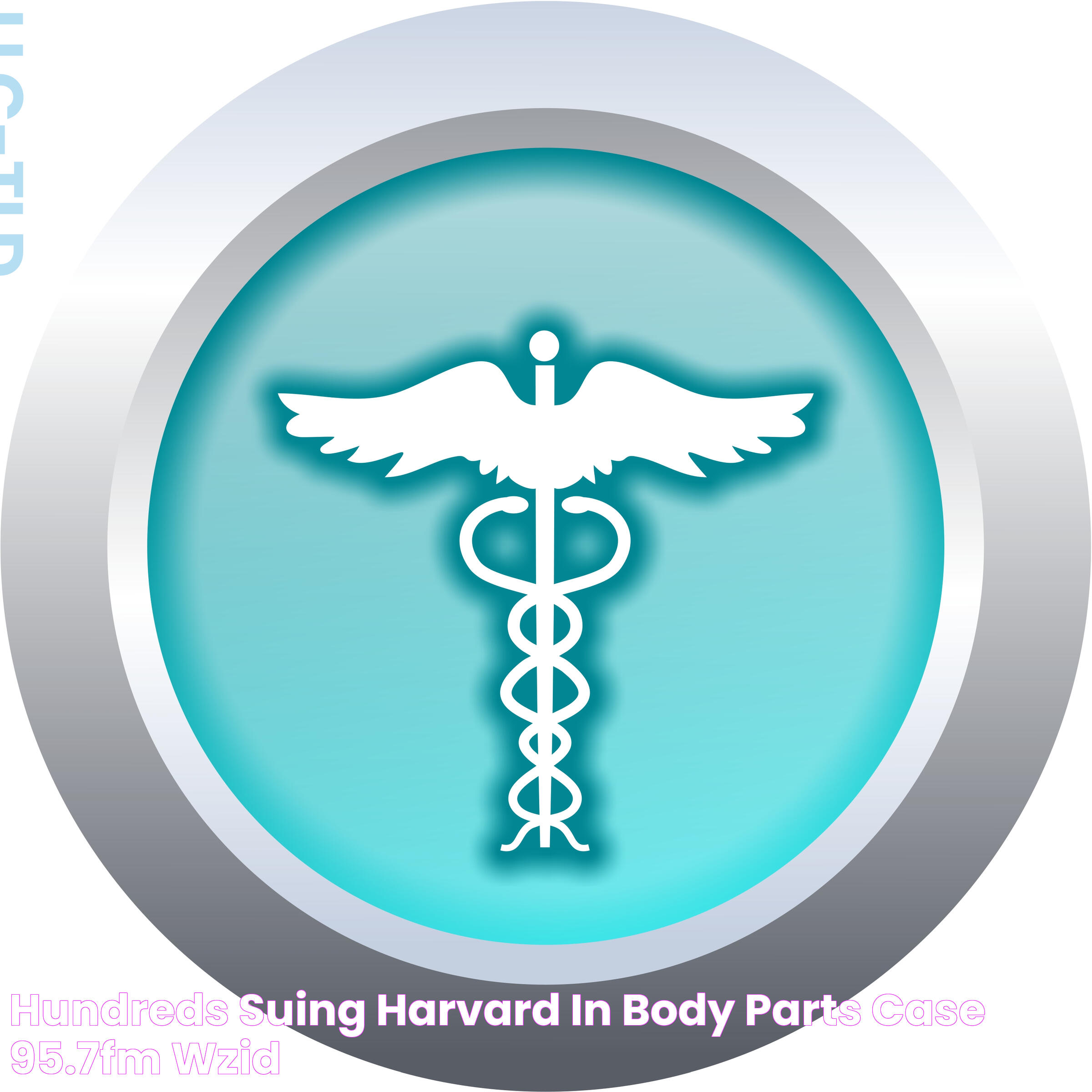The term "Harvard body parts" may evoke curiosity for many, but beneath this phrase lies a fascinating blend of academic brilliance, cutting-edge innovation, and medical mastery. Harvard University, a name synonymous with excellence, has long been a pioneer in the realms of education and research. When it comes to the intricacies of anatomy and human biology, Harvard has established itself as a leader, offering groundbreaking insights into how the human body functions. From its specialized anatomical research to the development of advanced medical tools, the institution's contributions are monumental.
For centuries, anatomical studies have served as the bedrock of medical science, and Harvard has played a pivotal role in pushing these boundaries. The research involving "Harvard body parts" refers to the university's extensive efforts in dissecting, understanding, and applying human anatomical knowledge. This ranges from 3D-printed body parts for educational purposes to life-saving organ transplantation research. The institution's collaboration with hospitals, scientists, and technological innovators ensures continual advancements that redefine modern medicine.
But what makes "Harvard body parts" stand out? It's not merely about the physical components but also the pioneering methodologies and interdisciplinary approaches that integrate biology, technology, and education. This article delves deep into the multifaceted contributions and innovations associated with "Harvard body parts," shedding light on their profound impact on medicine, education, and humanity. From bioprinting techniques to organ preservation advancements, let’s explore how Harvard is shaping the future of anatomical science.
Read also:Delightful Choices Chick Fil A Menu And More
Table of Contents
- Biography of Harvard and Its Anatomical Research
- What Is Meant by Harvard Body Parts?
- How Did Harvard Body Parts Evolve Over Time?
- The Role of Technology in Harvard Body Parts
- Why Are Harvard Body Parts Important in Medical Education?
- Innovative Bioprinting at Harvard
- Organ Preservation and Transplantation Research
- Collaborations and Global Impact
- Harvard Body Parts and 3D Modeling
- How Does Harvard Bridge the Gap Between Science and Education?
- Ethical Considerations in Harvard Body Parts Research
- Success Stories and Real-World Applications
- Frequently Asked Questions
- Conclusion
Biography of Harvard and Its Anatomical Research
Founded in 1636, Harvard University is the oldest institution of higher learning in the United States. Located in Cambridge, Massachusetts, it has been a cornerstone of academic and research excellence for centuries. The university's well-regarded medical school, Harvard Medical School (HMS), was established in 1782 and has since become a global leader in medical education, research, and practice.
Over the years, Harvard Medical School has focused extensively on anatomical studies as part of its robust curriculum and research initiatives. The institution hosts state-of-the-art facilities, including laboratories and simulation centers, where researchers and students delve into human anatomy's complexities. These advancements have contributed significantly to the development of "Harvard body parts," an emblem of the university's cutting-edge research in anatomy and medicine.
Personal Details of Harvard
| Attribute | Details |
|---|---|
| Established | 1636 |
| Location | Cambridge, Massachusetts, USA |
| Medical School Founded | 1782 |
| Specialty | Medical Education and Research |
| Key Contribution | Innovations in Anatomical and Medical Sciences |
What Is Meant by Harvard Body Parts?
The phrase "Harvard body parts" encompasses a wide array of anatomical innovations and contributions spearheaded by Harvard's research teams. These "body parts" include educational tools such as 3D-printed organs, virtual anatomical models, and groundbreaking research in organ transplantation and tissue engineering. They represent Harvard’s commitment to intertwining technology with biology to advance medical science.
How Did Harvard Body Parts Evolve Over Time?
The evolution of "Harvard body parts" highlights the university’s continuous innovation in the field of anatomy. Starting from traditional cadaver-based studies, Harvard has embraced technological advancements like 3D printing, augmented reality, and tissue engineering. These transitions have made anatomical studies more accessible and efficient for students and researchers alike.
The Role of Technology in Harvard Body Parts
Technology has played a transformative role in the development of "Harvard body parts." Harvard's adoption of technologies like 3D bioprinting and virtual reality has revolutionized anatomical education and research. Such tools not only enhance the effectiveness of learning but also pave the way for novel medical treatments and interventions.
Why Are Harvard Body Parts Important in Medical Education?
The importance of "Harvard body parts" in medical education cannot be overstated. These resources provide students with a hands-on, immersive experience that bridges the gap between theory and practice. By utilizing innovative tools and techniques, Harvard ensures that its students are well-prepared for real-world medical challenges.
Read also:The Ultimate Guide To The Best Ebony Stars Celebrating Talent And Influence
Innovative Bioprinting at Harvard
Bioprinting is one of the most groundbreaking contributions to "Harvard body parts." By using 3D printing technology, Harvard researchers have successfully created life-like anatomical models and functional tissue structures. These innovations are instrumental in medical training and surgical planning.
Organ Preservation and Transplantation Research
Organ transplantation is a life-saving medical procedure, and Harvard has made significant strides in this domain. The university's research on organ preservation techniques and transplantation protocols has led to improved outcomes for patients worldwide.
Collaborations and Global Impact
The impact of "Harvard body parts" extends beyond the university’s walls. Through collaborations with global institutions and organizations, Harvard has shared its knowledge and expertise, contributing to advancements in medical science around the world.
Harvard Body Parts and 3D Modeling
3D modeling is a cornerstone of Harvard’s anatomical research. These models serve as invaluable resources for students and practitioners, offering a detailed and accurate representation of human anatomy that aids in both education and medical procedures.
How Does Harvard Bridge the Gap Between Science and Education?
Harvard bridges the gap between science and education through its innovative approach to anatomical studies. By leveraging cutting-edge research and technology, the institution ensures that its educational programs are both comprehensive and forward-thinking.
Ethical Considerations in Harvard Body Parts Research
Ethics play a crucial role in any scientific endeavor, and Harvard is no exception. The university prioritizes ethical considerations in its anatomical research, ensuring that all studies and applications are conducted responsibly and with respect for human dignity.
Success Stories and Real-World Applications
The "Harvard body parts" initiative has led to numerous success stories and real-world applications. From improving surgical training to advancing organ transplantation techniques, these contributions have had a profound impact on the field of medicine.
Frequently Asked Questions
- What are "Harvard body parts"? They refer to Harvard’s innovations in anatomical research, including 3D-printed organs and advanced surgical models.
- How does technology contribute to "Harvard body parts"? Technology enhances anatomical studies through tools like 3D printing and virtual reality.
- Why are they important in medical education? They provide a hands-on, immersive learning experience that bridges the gap between theory and practice.
- What is bioprinting? Bioprinting involves using 3D printing technology to create life-like anatomical models and functional tissue structures.
- How has Harvard impacted global medical science? Through collaborations and innovations, Harvard has contributed significantly to advancements in medical science worldwide.
- What ethical considerations are involved? Harvard ensures that all research is conducted responsibly and with respect for human dignity.
Conclusion
The contributions of Harvard to anatomical science, encapsulated in the term "Harvard body parts," represent a groundbreaking blend of tradition, innovation, and ethics. By pushing the boundaries of research and technology, Harvard continues to shape the future of medicine and education. Its pioneering work in areas such as bioprinting, organ transplantation, and 3D modeling not only benefits students and researchers but also has a profound impact on global medical practices. As we look to the future, the legacy of "Harvard body parts" will undoubtedly inspire further innovation and discovery in the field of anatomical science.


